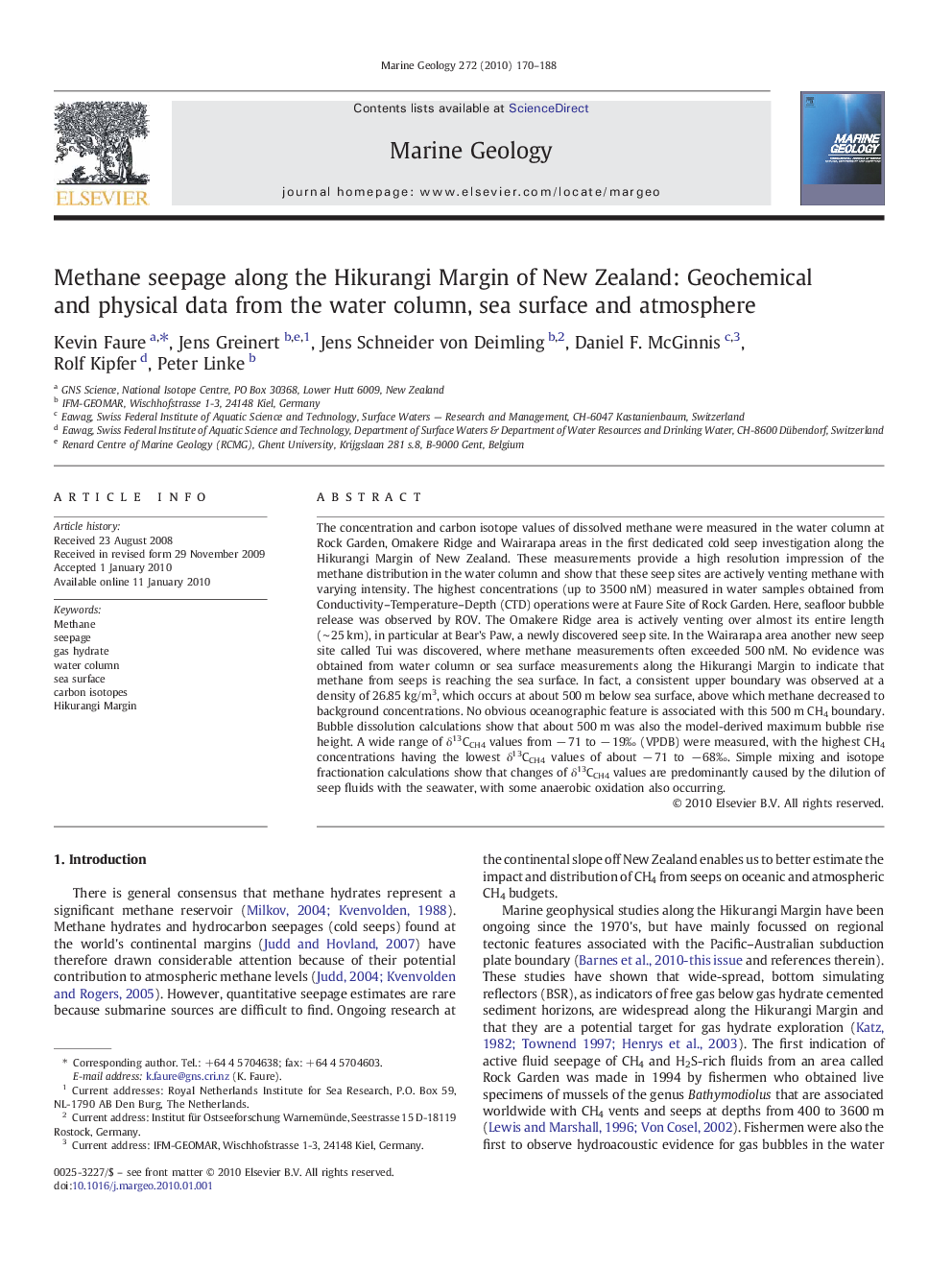| Article ID | Journal | Published Year | Pages | File Type |
|---|---|---|---|---|
| 4718808 | Marine Geology | 2010 | 19 Pages |
The concentration and carbon isotope values of dissolved methane were measured in the water column at Rock Garden, Omakere Ridge and Wairarapa areas in the first dedicated cold seep investigation along the Hikurangi Margin of New Zealand. These measurements provide a high resolution impression of the methane distribution in the water column and show that these seep sites are actively venting methane with varying intensity. The highest concentrations (up to 3500 nM) measured in water samples obtained from Conductivity–Temperature–Depth (CTD) operations were at Faure Site of Rock Garden. Here, seafloor bubble release was observed by ROV. The Omakere Ridge area is actively venting over almost its entire length (∼ 25 km), in particular at Bear's Paw, a newly discovered seep site. In the Wairarapa area another new seep site called Tui was discovered, where methane measurements often exceeded 500 nM. No evidence was obtained from water column or sea surface measurements along the Hikurangi Margin to indicate that methane from seeps is reaching the sea surface. In fact, a consistent upper boundary was observed at a density of 26.85 kg/m3, which occurs at about 500 m below sea surface, above which methane decreased to background concentrations. No obvious oceanographic feature is associated with this 500 m CH4 boundary. Bubble dissolution calculations show that about 500 m was also the model-derived maximum bubble rise height. A wide range of δ13CCH4 values from − 71 to − 19‰ (VPDB) were measured, with the highest CH4 concentrations having the lowest δ13CCH4 values of about − 71 to − 68‰. Simple mixing and isotope fractionation calculations show that changes of δ13CCH4 values are predominantly caused by the dilution of seep fluids with the seawater, with some anaerobic oxidation also occurring.
